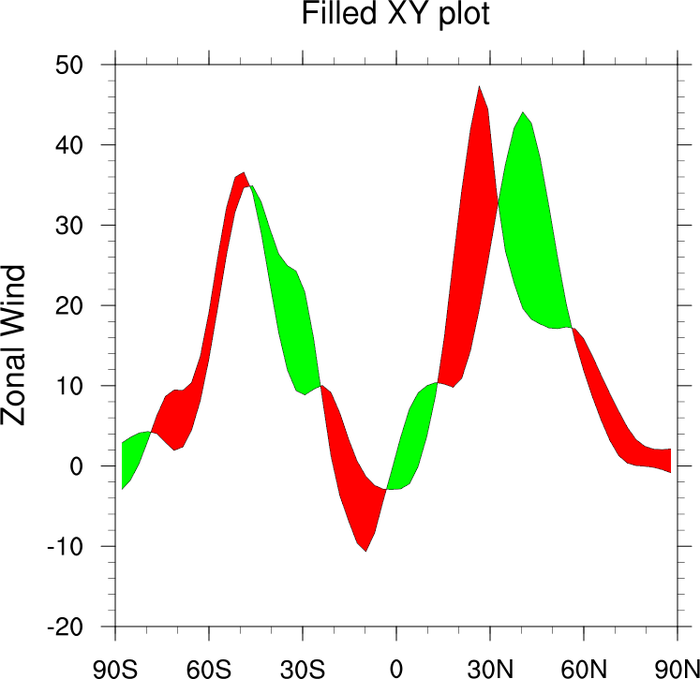- Your quiz is returned. I'd intended you to talk about net
change. I dropped the $dt$, and didn't have enough quizzes for section
2, so as an apology you all get a GOQF card....
If anyone had mentioned that I dropped the $dt$, they'd have gotten a big gold star!
- Your homework 4.3 is returned: graded 12, 21, 38
4.4 is due Thursday; 4.5 due Monday.
There's no great shakes here. In our introduction to the integral, we've begun by thinking of a definite integral as representing a signed area, between a curve and the x-axis. Now suppose that we want the area between two curves?

If one curve is always above the other, then we simply subtract the smaller area from the larger:

If the top curve is the graph of $f(x)$, and the bottom curve is the graph of $g(x)$, then the difference in the areas, which is what we want (in blue), is
\[ I=\int_{a}^{b}f(x)dx-\int_{a}^{b}g(x)dx = \int_{a}^{b}(f(x)-g(x))dx \]
Let's do some examples.
There are a couple of tricks here:
- One is to figure out what to do when two curves cross:

In this case, the sign of the area changes as $f$ and $g$ change roles (which one is above, which below). If we want the actual geometric area, and not the signed area, then we can use the absolute value:
\[ I = \int_{a}^{b}|\ f(x)-g(x)\ |\ dx \]
- The other trick is integrating along the y-axis, rather than
along the x-axis.

- #2, p. 349
- #3
- #6
- #17
- #31
- #41
- #45
- #46